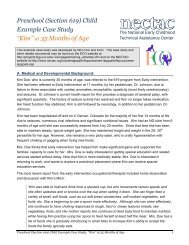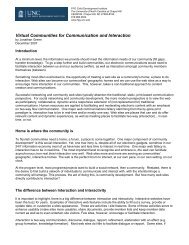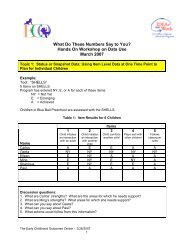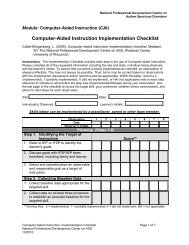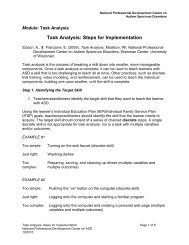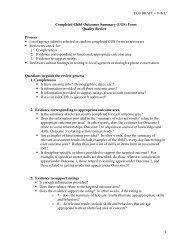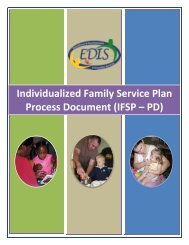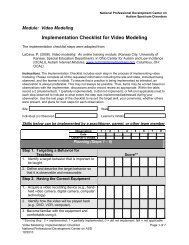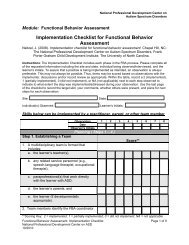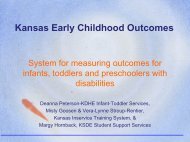Differential Reinforcement of Other Behaviors: Steps - National ...
Differential Reinforcement of Other Behaviors: Steps - National ...
Differential Reinforcement of Other Behaviors: Steps - National ...
Create successful ePaper yourself
Turn your PDF publications into a flip-book with our unique Google optimized e-Paper software.
<strong>National</strong> Pr<strong>of</strong>essional Development Center onAutism Spectrum DisordersModule: <strong>Differential</strong> <strong>Reinforcement</strong> <strong>of</strong> <strong>Other</strong> <strong>Behaviors</strong>e. duration, or how long the behavior lasts: (e.g., a tantrum that lasts a fewminutes or that can last for an hour).This information can be summarized to aid in the assessment <strong>of</strong> the possible functions<strong>of</strong> the interfering behavior. For example, knowing that Joey loudly shouts pr<strong>of</strong>anitiesbetween three-four times for 30 seconds or more when in the lunchroom providesspecific information about the interfering behavior that can be <strong>of</strong> value in planningintervention.Step 2. Determining the Function <strong>of</strong> the Interfering Behavior1. Teachers/practitioners use functional behavior assessment to identify thefunction <strong>of</strong> the interfering behavior.An important part <strong>of</strong> determining the function <strong>of</strong> the interfering behavior will beinterviewing team members about the nature <strong>of</strong> the problem behavior. To do so, you willneed to complete a functional behavior assessment that will allow you to identify thecurrent antecedents and consequences. For more information about this procedure,please see Functional Behavior Assessment: <strong>Steps</strong> for Implementation (<strong>National</strong>Pr<strong>of</strong>essional Development Center on Autism Spectrum Disorders, 2008).Step 3. Identifying Data Collection Measures and Collecting Baseline Data1. Teachers/practitioners identify data collection measures to be used to assessthe interfering behavior before implementing the intervention.When collecting data for DR, it is important to focus on the frequency, topography, andintensity/severity <strong>of</strong> the behavior. Below are some examples <strong>of</strong> data sheets that may beparticularly helpful in describing the interfering behavior.Example: Frequency Data Collection SheetLearner’s name ___________________________Interfering behavior hitting___________________Date________ Observer____________________AM recess √√√√√√√√Math √√Reading √√GymMusic √√√√PM recess √√√√√√Daily Total 22<strong>Differential</strong> <strong>Reinforcement</strong> <strong>of</strong> <strong>Other</strong> <strong>Behaviors</strong>: <strong>Steps</strong> for Implementation Page 2 <strong>of</strong> 10<strong>National</strong> Pr<strong>of</strong>essional Development Center on ASD10/2010



